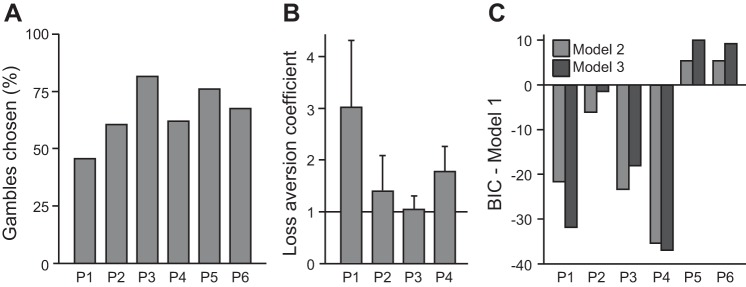Fig. 2.

Model-based analysis of patient decisions. A: the 6 patients varied in their tendency to gamble, choosing a risky gamble option over the safe option in 46–82% of trials. B: 4 patients made decisions consistent with the value function in parametric decision models. A loss aversion coefficient >1 indicates behavioral loss aversion, a greater impact of potential losses on choice than equivalent potential gains. C: compared with model 1 (which accounted for a gambling tendency but no value dependency in choice), models that included the gamble expected value (model 2) or a gamble subjective value that depended on a loss aversion coefficient (model 3) were preferred by Bayesian model comparison in 4 subjects (P1, P2, P3, and P4), which penalizes for model complexity. BIC, Bayesian Information Criterion.
